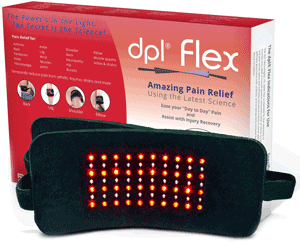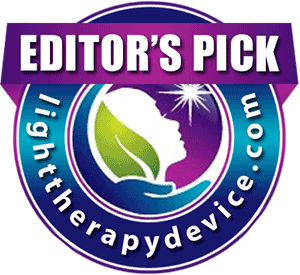Photobiologist Dr. John Ott introduced the term full-spectrum light during the 1960s, as a means to describe man-made light sources that emitted visible to ultraviolet light on the light spectrum. Today, there are many different bulbs and tabletop lamps advertised as producing full-spectrum light. Some devices are touted as additionally closely replicating the rays naturally created by the sun.

However, different manufacturers have their own concepts of the range of full-spectrum light their products emit. Some lights and lamps are advertised as producing rays extending throughout the visible light spectrum along with UVA and UVB light. Others claim to reduce the harmful rays that cause radiation and are limited to the visible light spectrum. Over the years, individuals and researchers discovered that exposure to full-spectrum light offers a variety of health benefits.
Table of Contents
Seasonal Affective Disorder
More than 10 million people in the United States are thought to suffer from the condition known as seasonal affective disorder. The problem develops when individuals do not get enough sunlight exposure during the winter months. The shortened days interfere with the transmission of the hormones or neurotransmitters melatonin and serotonin. SAD occurs more often in women, in adults aged 30 and under or in people having a family history. Living more than 30 degrees above or below the equator also increases the risk.
Symptoms of the disorder surface when serotonin remains in the pre-synaptic neurons due to the interference of a transporter protein. Affected individuals then experience anxiety, depression and fatigue along with disruptions of eating and sleeping patterns. However, in recent years, full-spectrum light boxes have been recommended to normalize serotonin levels and minimize SAD symptoms.
White Light Therapy
The white light produced by the boxes should be rated at 10,000 lux in order to produce optimal benefits. Treatment involves positioning the box slightly above eye level and 18 to 24 inches away from the face. The box should also be positioned at an angle replicating 10:00 or 2:00 on a clock face. Treatment involves sitting near the light as soon as one wakes in the morning for approximately 30 minutes. However, some find that 15-minute treatments twice a day works better for them.
The light passes through the pupils and to the bottom of the retinas, which sends a message to the brain to release the hormones. When hormone levels increase, affected patients report having more energy and diminished negative emotions. Treatments generally continue for one or two weeks before SAD individuals notice results.
The light therapy induces serotonin production and release between nerve cells in the brain and in the central nervous system. When present, mood improves along with energy levels and cognitive function.
Possible Side Effects
During the first few days or weeks of phototherapy, individuals may experience blurred vision, headaches and nausea. However, once the body becomes accustomed to the light, the symptoms commonly disappear. SAD sufferers might also reduce treatment times to 10-minute daily sessions until the body adjusts.
Major Depression
Groups of researchers from different world countries were also curious as to what effects full-spectrum light might have on non-seasonal or major depression. One such study was published in the November 2015 issue of the “JAMA Psychiatry” journal. For a period of eight weeks, 122 volunteers aged 19 to 60 and diagnosed with depression were exposed to full-spectrum light, full-spectrum light along with an antidepressant medication, the medication alone or placebo light and medication therapy. The light therapy sessions spanned 30 minutes daily first thing each morning.
At the end of the trial period, the participants exposed to the light therapy accompanied by the antidepressant medication experienced the best results. The individuals exposed to the light therapy alone came in second for symptomatic relief. Interestingly enough, the control group who underwent placebo therapy reported having fewer symptoms compared to the group that took the antidepressant medication alone.
Re-adjust Circadian Rhythms
People who frequently travel between time zones or who commonly work night shifts often complain of circadian rhythm disruptions. As their bodies are not exposed to natural sunlight due to odd hours of wakefulness, falling asleep becomes difficult. However, by using a full-spectrum white light box or lamp, they are able to retrain their brain to wait and release melatonin when they desire to go to bed at the end of their day. The hormone is equated with producing sleepiness.
Treating circadian rhythm disorders is similar to the therapy required for SAD or depression. The individuals need merely sit in front of the lamp for 20 to 30 minutes upon awakening. In this way, the brain is tricked into believing daylight has occurred and makes the necessary hormone adjustments needed for increased energy and alertness.


